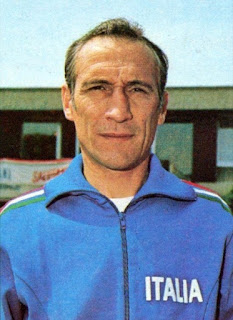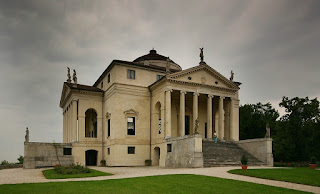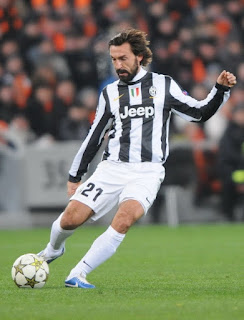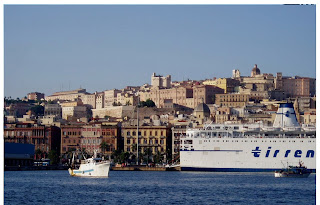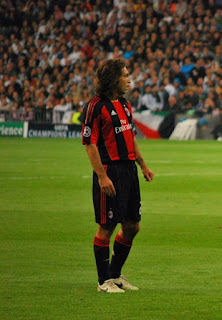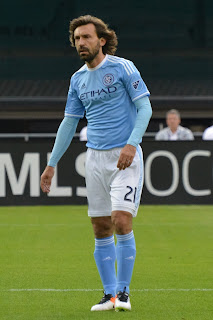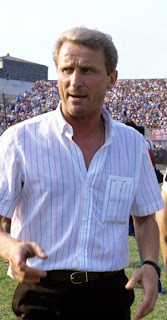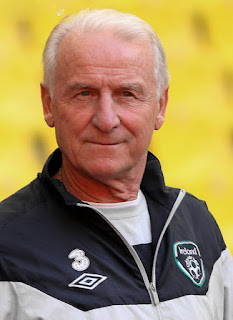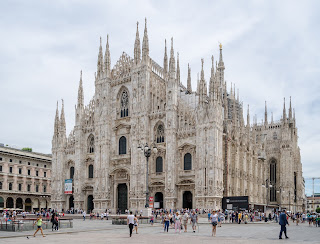Former striker is all-time record goalscorer for Juventus
 |
| Alessandro Del Piero played for 19 seasons at Juventus, scoring 290 goals |
Regarded as one of Italy’s greatest players, his overall
goals tally of 346 in Italian football in all competitions has been bettered
only once in history, by Silvio Piola, who was a member of Italy’s winning team
in the 1938 World Cup and who scored 390 goals in his career. Del Piero also finished his career having
scored at least one goal in every competition in which he took part.
Del Piero was a member of six Serie A title-winning Juventus
teams between 1995 and 2012 and would have had eight winner’s medals had the
club not been stripped of the 2005 and 2006 titles due to the so-called
Calciopoli corruption scandal.
He also won a Champions League medal in 1996 after Marcello
Lippi’s team beat Ajax on penalties to lift the trophy in Rome.
Del Piero played in three World Cups but was never able to
reproduce his club form more than fleetingly in any of them. He started only one match in the 2006 triumph
of the Azzurri in Germany.
 |
| Del Piero leaving the stadium after his World Cup semi-final goal against Germany |
The son of an electrician, Gino, and his wife, Bruna, Del
Piero dreamed of being a footballer but at one time considered a
career as a lorry driver, because he thought it might provide his best chance
of seeing other countries.
The family lived in Saccon, a hamlet outside Conegliano, and
he played for his local youth team in San Vendemiano. He initially played in
goal, which pleased his mother as she imagined there was less chance he would
be injured, before he was persuaded by his brother, Stefano, that he would be
wasted as a goalkeeper as he was as skilful as any of the team’s outfield
players, if not better.
Stefano, who played professionally himself for Sampdoria
before injury curtailed his career, went on to become his brother’s agent.
Del Piero’s first senior club was Padova, whose youth set-up
he joined at the age of 13, making his senior debut aged 16 and his Serie B
debut aged 17 in March 1992. He scored
his first senior goal in November of the same year.
Juventus signed him in 1993 for the sum of five billion lire
and he would remain with the Turin side for 19 seasons under 11 managers, including Giovanni Trapattoni, who
gave him his debut, Lippi, Carlo Ancelotti, Fabio Capello, Didier Deschamps,
Claudio Ranieri and Antonio Conte.
 |
| Del Piero played for Sydney FC in Australia after ending his time at Juventus in 2012 |
When Lippi succeeded Trapattoni, Del Piero began to play
regularly after Roberto Baggio suffered a serious injury, taking his place
alongside Gianluca Vialli and Fabrizio Ravanelli and scoring eight goals as
Juventus won the Serie A title for the first time in nine years.
There were similarities between his style of play and that
of Baggio. Both were technically very
accomplished and both had the imagination to create goalscoring opportunities
for themselves and others. Gianni
Agnelli, the club’s patriarchal former president, nicknamed him Pinturicchio
after a Renaissance artist on the basis that his nickname for Baggio was
Rafaello – Raphael – and Pinturicchio had been Raphael’s pupil.
In 19 seasons, inevitably, there were ups and downs, managers
who appreciated his qualities and others who were less enthusiastic, but he
inevitably retained the affection of the fans, not least when, as captain, he
chose to remain with the club after their enforced relegation following the
Calciopoli scandal, when many other stars left. He insisted that he owed the
Agnelli family a debt of loyalty and would lead them back from Serie B to Serie
A, which he did at the first attempt despite starting the season with a
nine-point deduction.
It was Antonio Conte, his former team-mate, who would call
time on Del Piero’s Juventus career when he announced at the start of the
2011-12 season that he would be using the player, by then almost 37, only
sparingly. Later in the season the club
announced he would be released at the end of the campaign.
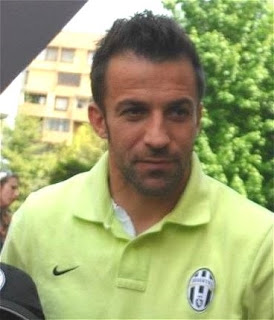 |
| Del Piero stayed loyal to Juventus even in difficult times |
He made his final appearance in a Serie A match on May 13
against Atalanta, in the last match of the season and with the title already
won. He scored – his 208th
league goal for the club – and when he was substituted he received an ovation
from fans and both sets of players that went on for so long the match had to be
halted as he completed a lap of honour.
There were similar scenes when he was taken off towards the end of the
Coppa Italia final a few days later, his last match in the famous black and
white shirt.
He played on for a couple of seasons in Australia and India
on lucrative contracts before hanging up his boots for good in 2015. Since then
he has pursued his interest in music – he is a friend of the musician Noel
Gallagher, of Oasis fame – and done considerable work with charities. He has made many appearances on television
and is currently a regular pundit on Sky Sport Italia.
Married since 2005 to Sonia Amoruso, he has three children,
sons Tobias and Sasha and a daughter, Dorotea.
Conegliano is a town of almost 35,000 people in the Veneto,
about 30km (19 miles) north of Treviso.
The remains of a 10th century castle, once owned by the
Bishop of Vittorio Veneto, stands on a hill that dominates the town. Conegliano is at the centre of a
wine-producing region and is famous in particular for Prosecco, the popular
sparkling wine made from the glera grape.
Travel tip:
Padua, known as Padova in Italian, where Del Piero began his
career, is a city in the Veneto known among other things for the frescoes by
Giotto in the Scrovegni Chapel and the
huge 13th-century Basilica di Sant’Antonio, with its seven Byzantine-style
cupolas and four cloisters. The basilica contains many notable artworks and the
saint’s tomb. The town itself is particularly appealing for its arcaded streets
and stylish cafes.


